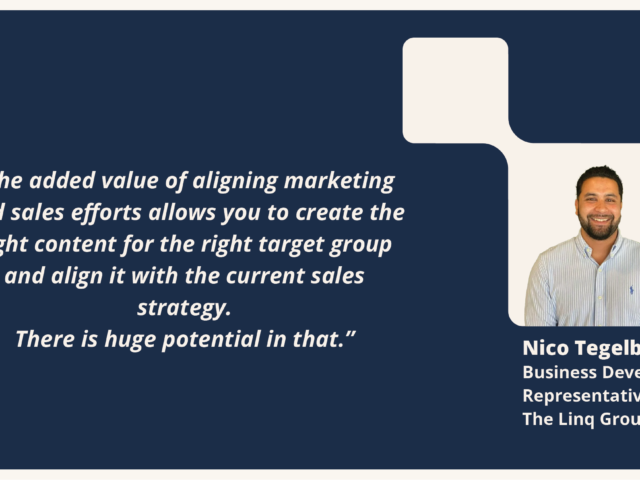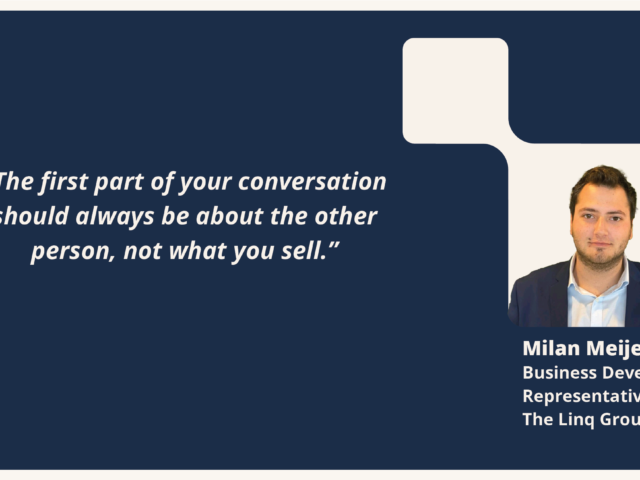Inbound vs. Outbound Marketing for B2B: Which One is Right for You?

The goal of every profitable business is to generate a steady stream of leads and drive growth. However, finding or attracting the right prospects isn’t easy. Fortunately, in this quest, two marketing methodologies have emerged as the dominant strategies to consider: Inbound and outbound marketing.
If you are planning on, or already in the process of, implementing inbound or outbound marketing practices, you might be torn between the two. Both strategies are very distinct in their approach, and both have their advantages. But which one is right for your B2B strategy?
First things first – what are inbound and outbound marketing practices, and what are the main differences between the two?
What is inbound marketing?
Inbound marketing is a strategy that focuses on attracting potential customers to your brand through valuable and informative content. By offering solutions to your target audience’s problems and addressing their needs, you build trust and position your company as an authority in your industry.
The inbound marketing methodology involves creating targeted content that aligns with your buyer’s journey, ultimately leading to higher engagement and conversion rates.
Examples of inbound marketing
- Engaging and informative video content
- Prospect-focused blog posts optimized for SEO
- Organic social media content across relevant channels
- Valuable long-form content like white papers and eBooks
- Personalized email marketing campaigns and newsletters
- Webinars and podcast interviews with experts and thought leaders in your industry
Inbound marketing best practices
We have compiled a list of best practices to get the most out of your inbound marketing efforts:
- Conduct thorough keyword research to optimize your content for SEO
- Create a content calendar to plan and organize your content production
- Develop buyer personas to understand your target audience and their needs better
- Use a mix of content formats like blog posts, eBooks, webinars, and videos to cater to different preferences
- Monitor your analytics to identify high-performing content and make data-driven decisions
What is outbound marketing?
Outbound marketing, on the other hand, involves pushing your message out to a broad audience, often through traditional advertising methods. The goal is to capture the interest of potential customers and typically consists in reaching out to prospects through direct communication, such as cold calling or email campaigns.
LinkedIn, for example, is a popular channel for B2B companies to connect with their target audience directly. Advanced search filters and tools like LinkedIn Sales Navigator allow you to filter through a vast network of potential customers, identify decision-makers, and collect information to make your outreach more successful.
Examples of outbound marketing
- Promoting your business at events
- Cold calling prospects to introduce your product or service
- Sending targeted promotional emails to a list of potential customers
- Practicing outbound content syndication by sharing your content on third-party websites
- Investing in paid advertising like online ads such as LinkedIn Sponsored Content or Google Ads
- Collaborating with industry influencers, events, or organizations to leverage their audience and credibility like sponsored webinars or podcasts appearances
Outbound marketing best practices
For a successful outbound marketing campaign, focus on implementing these tips:
- Develop a compelling value proposition that sets you apart from the competition
- Test and optimize your messaging and ads to improve performance
- Identify and segment your target audience for more personalized outreach
- Measure your results to determine the ROI of your outbound campaigns
- Leverage industry influencers or partnerships to broaden your reach
What are the main differences between the two?
Customers come to you vs. You pursue your customers – Inbound marketing focuses on attracting potential customers by offering valuable content, while outbound marketing involves directly reaching out to prospects.
Personalized vs. bulk – Inbound marketing targets specific buyer personas with tailored content, while outbound marketing casts a wider net to reach a broader audience.
Focusing on providing value vs. promoting your business – Inbound marketing positions your brand as a helpful resource, while outbound marketing is more promotional.
Organic channels vs. paid channels – Inbound marketing leverages organic channels, such as SEO and social media, while outbound marketing utilizes paid and direct channels, like advertising and cold calling.
Before making a decision: Assess your goals and resources
To decide whether to focus on inbound, outbound, or a combination of both, evaluating your company’s goals, resources, and target audience is essential.
For instance, if your primary objective is to build long-term relationships, establish brand authority, and generate organic traffic, inbound marketing may be the way to go. However, outbound marketing might be a better fit if your goal is to quickly generate leads and maximize immediate sales opportunities.
You also want to consider your desired time frame for achieving results. Inbound marketing is typically a longer-term strategy that builds trust, engagement, and brand authority over time. Outbound marketing can yield quicker results through targeted campaigns, but it may not have the same long-term impact on brand recognition and loyalty.
Another critical point is seeing how either of them can be integrated into your existing strategies. When you evaluate your current marketing strategy, identify areas where inbound and outbound tactics can complement each other. For instance, you may already have a strong content strategy that can be improved with targeted outbound initiatives like LinkedIn outreach or paid advertising. Or, you might leverage your existing outbound efforts to drive traffic to your inbound content, creating a more holistic marketing approach.
When to choose one over the other
Inbound marketing
When your goal is to build long-term relationships with your customers by providing value through informative and engaging content.
You want to improve your SEO and brand positioning through thought leadership and expert content.
If you have a limited budget and want to focus on organic growth through content marketing and social media.
Outbound marketing
When you need to generate leads quickly and have the budget for paid advertising or events.
If you are targeting a specific niche or demographic that may not be actively searching for your content online.
You want to complement your inbound marketing efforts with targeted outreach, such as LinkedIn outbound marketing or trade show participation.
Using inbound marketing for lead generation
Though outbound marketing is quicker for generating leads, inbound marketing helps you attract more high-quality leads and nurture them throughout their buyer’s journey.
To generate leads through your inbound marketing efforts, you need to make sure to provide relevant resources for different stages of the marketing funnel.
Search Engine Optimization (SEO): Optimize your content for relevant keywords your target audience will likely search for. This will help improve your search engine rankings and increase the visibility of your content, attracting more potential leads.
Creating high-quality content: Your content should be tailored to your target audience’s needs, pain points, and interests. Presenting content your prospects are searching for in a helpful way will help you establish your brand as an industry thought leader and attract more potential clients to your website.
Social Media Promotion: Leverage your social media presence to share your content, engage with your audience, and drive traffic to your website. Using LinkedIn, Facebook, Twitter, and other relevant platforms can amplify your content and reach a wider audience.
Lead Magnets: Offer valuable resources, such as downloadable guides, templates, or checklists, in exchange for contact information. This helps you capture leads who show organic interest in your content and allows you to nurture them further through targeted email campaigns.
Combining Inbound and Outbound Marketing for Maximum Impact
Instead of deciding only to go down one road, you might want to consider both inbound and outbound to create a more well-rounded B2B marketing strategy. Here are some ways of how you can combine the two:
- Align your content strategy with your outbound initiatives, such as sharing your valuable inbound content through LinkedIn outbound marketing or email campaigns
- Use paid social media advertising to boost the reach of your inbound content and attract more leads
- Implement Account-Based Marketing (ABM) to personalize your outbound efforts and create a more targeted experience for high-value prospects
- Enhance your email marketing by nurturing outbound leads with tailored and relevant content
- Incorporate webinars, events, and other inbound content into your outbound marketing strategies to create a cohesive and memorable experience for your audience
Inbound vs. outbound marketing: An overview
| Inbound Marketing | Outbound Marketing | |
| Tools | Blogging, podcasts, content creation, social media content, video marketing, webinars, e-books, SEO | Cold calls, TV and magazine commercials, events, direct emails, display ads, influencer collaborations |
| Targeting | Aimed at the targeted audience | Targets a very broad audience |
| Conversion rate | More complicated to track due to longer conversion rates | Higher, easier to measure |
| Communication features | Entertaining, engaging, educating, creates trust, and boosts credibility | Direct, promotional, creates awareness |
| Cost effeciency | Lower expenses but slow-growing results | Higher costs with almost instant and visible outcomes |
| Expenses patters | Flexible, require constant revaluation | Primarily static, grow or decrease gradually |
Ultimately, the decision between inbound and outbound marketing depends on your specific goals, resources, and audience. By understanding the differences between these two methodologies and leveraging their respective strengths, you can create a successful B2B marketing strategy that will drive results. Don’t be afraid to experiment and adapt your approach as needed to find the perfect balance for your company.
Struggeling with your lead generation strategy? Schedule a call with our experts!












